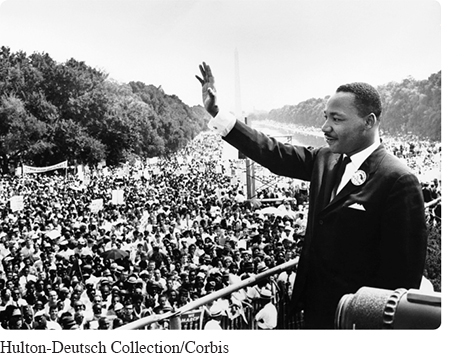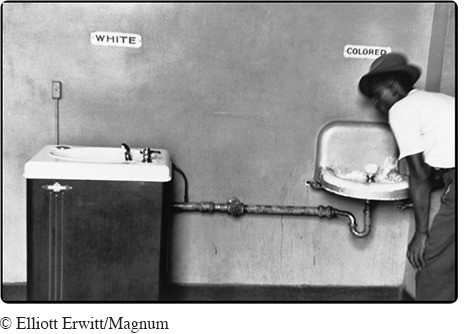Considering the Rhetorical Situation
Arguments do not take place in isolation. They are written by real people in response to a particular set of circumstances called the rhetorical situation (see The Rhetorical Situation in the Introduction). The rhetorical situation consists of the following five elements:
102
The writer
The writer’s purpose
The writer’s audience
The question
The context
By analyzing the rhetorical situation, you are able to determine why the writer made the choices he or she did and how these choices affect the argument.
ANALYZING THE RHETORICAL SITUATION
To help you analyze the rhetorical situation of an argument, look for information about the essay and its author.
Look at the essay’s headnote. If the essay you are reading has a headnote, it can contain useful information about the writer, the issue being discussed, and the structure of the essay. For this reason, it is a good idea to read headnotes carefully.
Look for clues within the essay. The writer’s use of particular words and phrases can sometimes provide information about his or her preconceptions as well as about the cultural context of the argument. Historical or cultural references can indicate what ideas or information the writer expects readers to have.
Search the Web. Often, just a few minutes online can give you a lot of useful information—
such as the background of a particular debate or the biography of the writer. By looking at titles of the other books or essays the writer has written, you may also be able to get an idea of his or her biases or point of view.
The Writer
Begin by trying to determine whether anything in the writer’s background (for example, the writer’s education, experience, race, gender, political beliefs, religion, age, and experiences) has influenced the content of the argument. Also consider whether the writer seems to have any preconceptions about the subject.
103
ANALYZING THE WRITER
What is the writer’s background?
How does the writer’s background affect the content of the argument?
What preconceptions about the subject does the writer seem to have?
If you were analyzing “Letter from Birmingham Jail,” it would help to know that Martin Luther King Jr. was pastor of the Dexter Avenue Baptist Church in Montgomery, Alabama. In 1956, he organized a bus boycott that led to a United States Supreme Court decision that outlawed segregation on Alabama’s buses. In addition, King was a leader of the Southern Christian Leadership Conference and strongly believed in nonviolent protest. His books include Stride towards Freedom (1958) and Why We Can’t Wait (1964). His “I Have a Dream” speech, which he delivered on the steps of the Lincoln Memorial on August 28, 1963, is considered by scholars to be one of the most influential speeches of the twentieth century. In 1964, King won the Nobel Prize for peace.

In “Letter from Birmingham Jail,” King addresses the injustices that he sees in America—
104
But more basically, I am in Birmingham because injustice is here. Just as the prophets of the eighth century B.C. left their villages and carried their “thus saith the Lord” far beyond the boundaries of their home towns, and just as the Apostle Paul left his village of Tarsus and carried the gospel of Jesus Christ to the far corners of the Greco-
The Writer’s Purpose
Next, consider what the writer hopes to achieve with his or her argument. In other words, ask yourself if the writer is trying to challenge people’s ideas, persuade them to accept new points of view, or influence their behavior.
ANALYZING THE WRITER’S PURPOSE
Does the writer state his or her purpose directly, or is the purpose implied?
Is the writer’s purpose simply to convince or to encourage action?
Does the writer rely primarily on logic or on emotion?
Does the writer have a hidden agenda?
It is clear that Martin Luther King Jr. wrote “Letter from Birmingham Jail” to convince readers that even though he had been arrested, his actions were both honorable and just. To get readers to understand that, like Henry David Thoreau, he is protesting laws that he considers wrong, he draws a distinction between just and unjust laws. For him, a law is just if it “squares with the moral law or the law of God” (16). A law is unjust if it “is out of harmony with the moral law” (16). As a clergyman and a civil rights leader, King believed that he had an obligation both to point out the immorality of unjust laws and to protest them—
105
The Writer’s Audience
To analyze the writer’s audience, begin by considering whether the writer seems to see readers as friendly, hostile, or neutral. (For a discussion of types of audiences, see Considering the Audience in the Introduction.) Also, determine how much knowledge the writer assumes that readers have. Then, consider how the writer takes into account factors like the audience’s race, religion, gender, education, age, and ethnicity. Next, decide what preconceptions the writer thinks readers have about the subject. Finally, see if the writer shares any common ground with readers.
ANALYZING THE WRITER’S AUDIENCE
Who is the writer’s intended audience?
Does the writer see the audience as informed or uninformed?
Does the writer see the audience as hostile, friendly, or neutral?
What values does the writer think the audience holds?
What does the writer seem to assume about the audience’s background?
On what points do the writer and the audience agree? On what points do they disagree?
In “Letter from Birmingham Jail,” King aims his argument at more than one audience. First, he speaks directly to eight clergymen from Birmingham, who are at worst a hostile audience and at best a skeptical one. They consider King to be an outsider whose actions are “unwise and untimely” (1). Before addressing their concerns, King tries to establish common ground, referring to his readers as “fellow clergymen” and “my Christian and Jewish brothers.” He then goes on to say that he wishes that the clergymen had supported his actions instead of criticizing them. King ends his letter on a conciliatory note by asking his readers to forgive him if he has overstated his case or been unduly harsh.
In addition to addressing clergymen, King also speaks to white moderates, who he assumes are sympathetic to his cause but concerned about his methods. He knows that he has to influence this segment of his audience if he is to gain wide support for his cause. For this reason, King uses a restrained tone and emphasizes the universality of his message, ending his letter with a plea that is calculated to console and inspire those people who need reassurance (50):
106
Let us all hope that the dark clouds of racial prejudice will soon pass away and the deep fog of misunderstanding will be lifted from our fear-
The Question
Try to determine what question the writer is trying to answer. Is the question suitable for argument? Decide if there are good arguments on both sides of the issue. For example, what issue (or issues) is the writer confronting? Does he or she address them adequately?
ANALYZING THE QUESTION
What is the central question of the argument?
Are there solid arguments on both sides of the issue?
Has the writer answered the question fully enough?
The question King attempts to answer in “Letter from Birmingham Jail” is why he has decided to come to Birmingham to lead protests. Because the answer to this question is complicated, King addresses a number of issues. Although his main concern is with racial segregation in Alabama, he also is troubled by the indifference of white moderates who have urged him to call off his protests. In addition, he feels that he needs to explain his actions (for example, engaging in nonviolent protests) and address those who doubt his motives. King answers his critics (as well as his central question) by saying that because the people of the United States are interconnected, the injustices in one state will eventually affect the entire country.
The Context
The context is the situation that creates the need for the argument. As you analyze an argument, try to determine the social, historical, economic, political, and cultural events that set the stage for the argument and the part that these events play in the argument itself.
ANALYZING THE CONTEXT
What situation (or situations) set the stage for the argument?
What social, economic, political, and cultural events triggered the argument?
What historical references situate this argument in a particular place or time?
107
The immediate context of “Letter to Birmingham Jail” is well known: Martin Luther King Jr. wrote an open letter to eight white clergymen in which he defended his protests against racial segregation. However, the wider social and political context of the letter is less well known.
In 1896, the U.S. Supreme Court ruled in Plessy v. Ferguson that “separate but equal” accommodations on railroad cars gave African Americans the equal protection guaranteed by the Fourteenth Amendment of the U.S. Constitution. Well into the twentieth century, this decision was used to justify separate public facilities—
In the mid-
King’s demonstrations in Birmingham, Alabama, took place within this larger social and political context. His campaign was a continuation of the push for equal rights that had been gaining momentum in the United States for decades. King, along with the Southern Christian Leadership Conference, had dispatched hundreds of people to Birmingham to engage in nonviolent demonstrations against those who were determined to keep African Americans from gaining their full rights as citizens.
108
